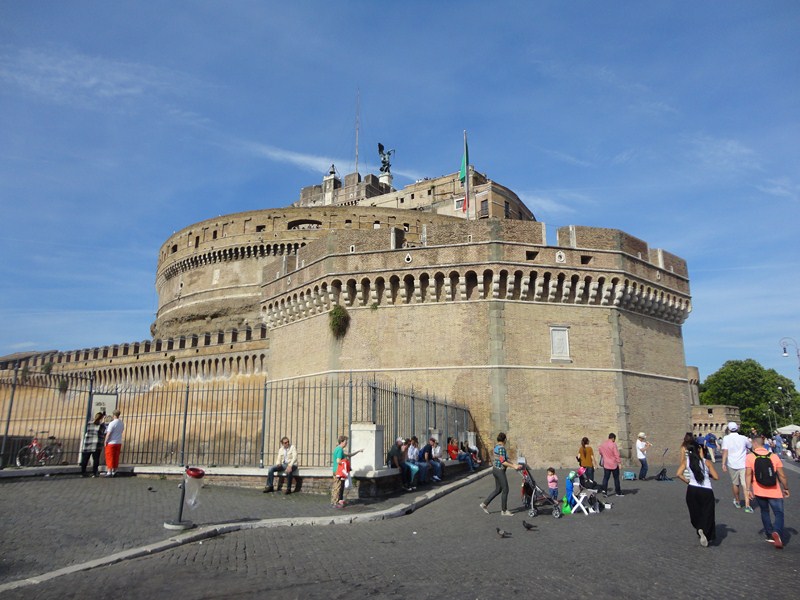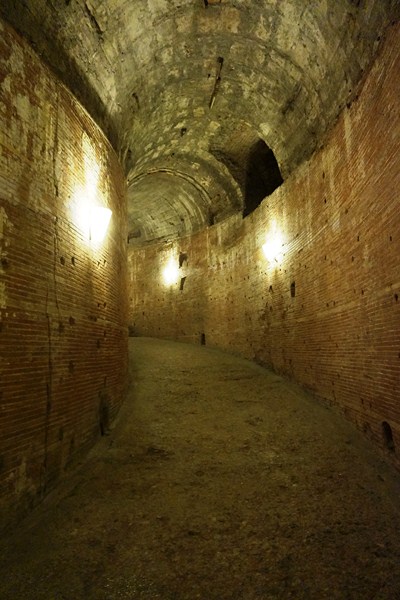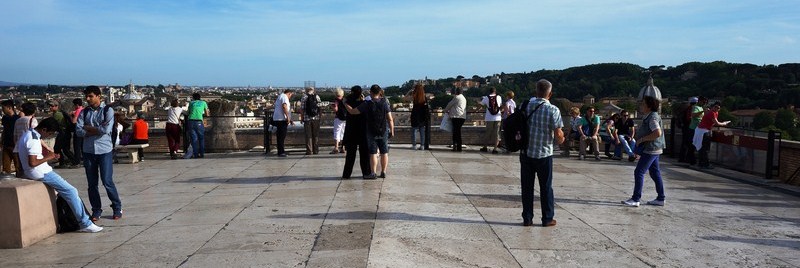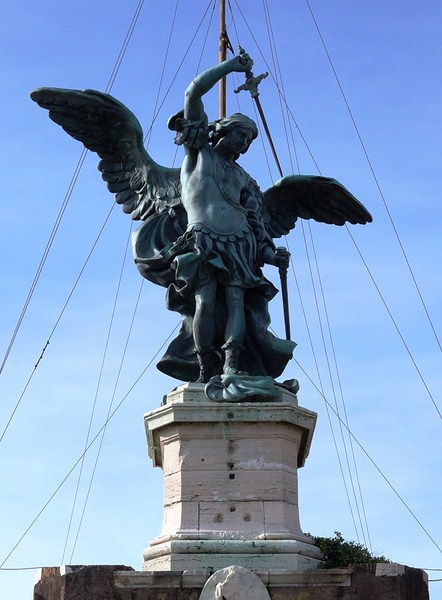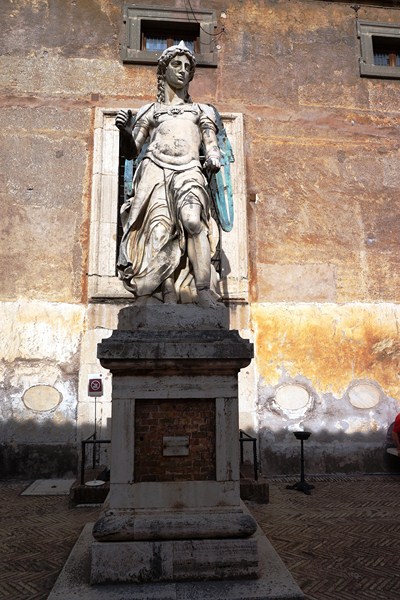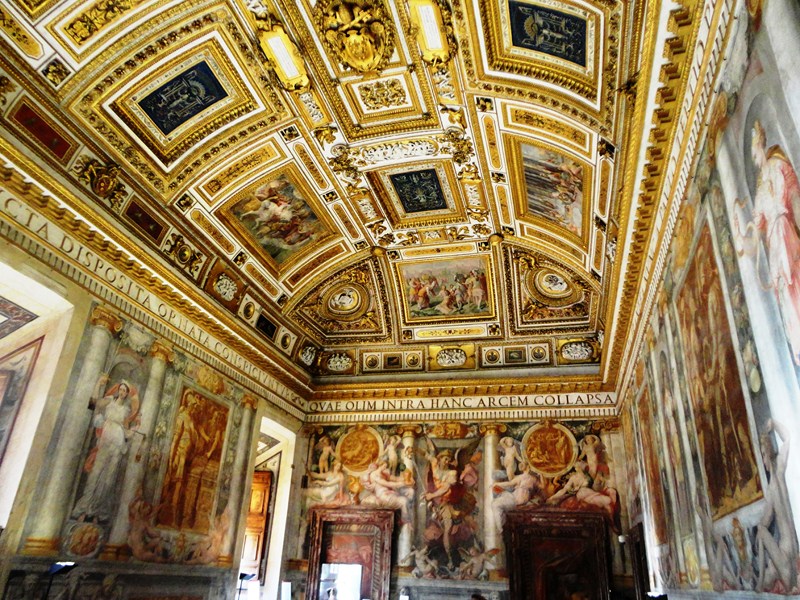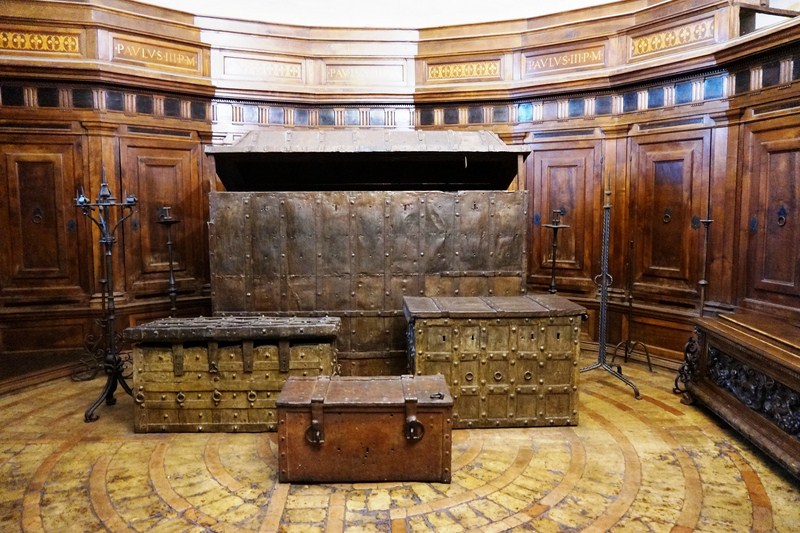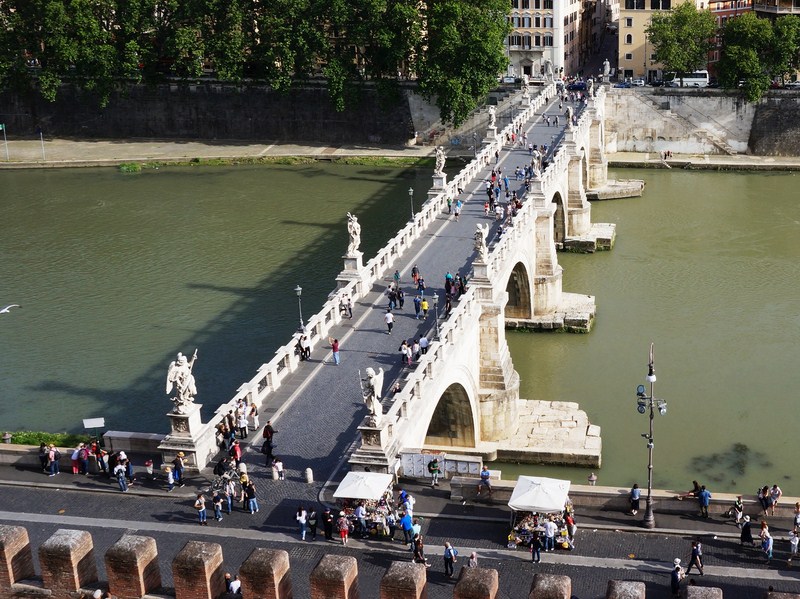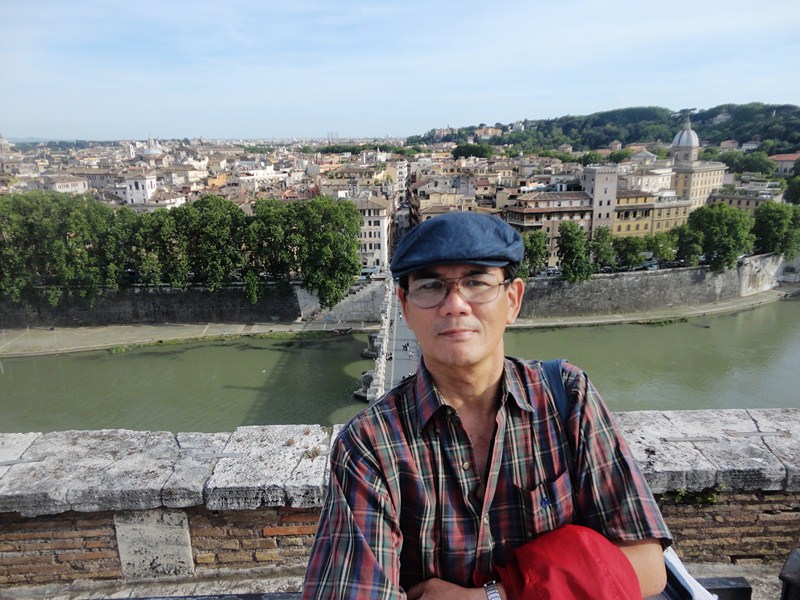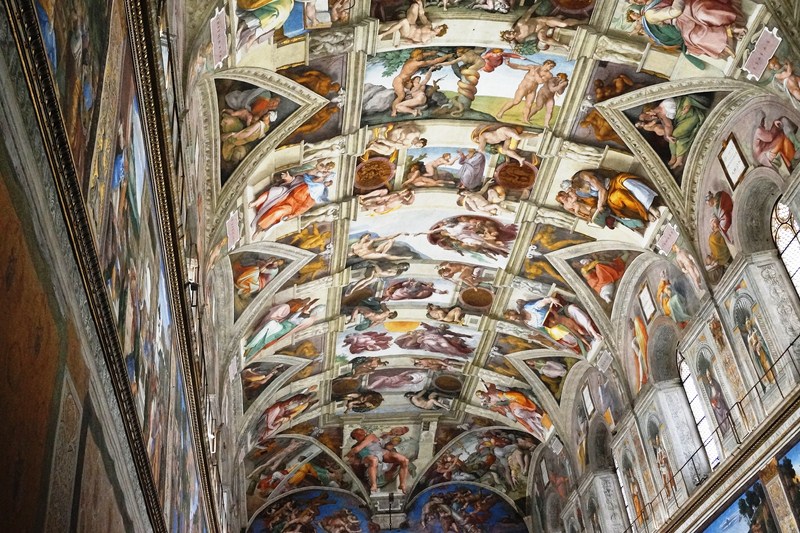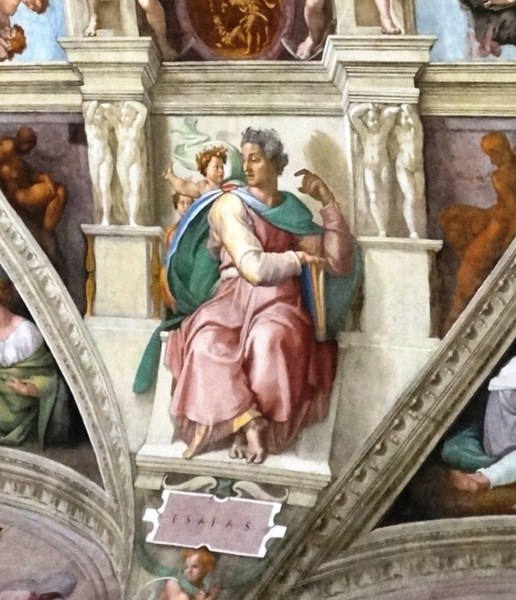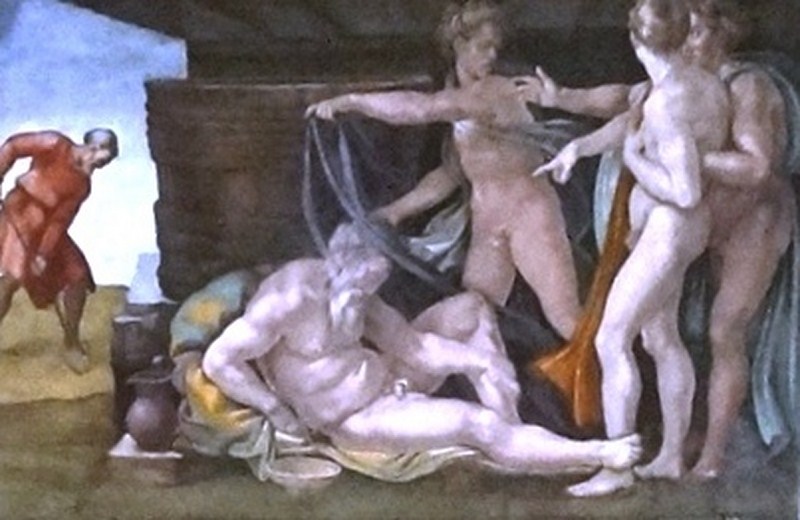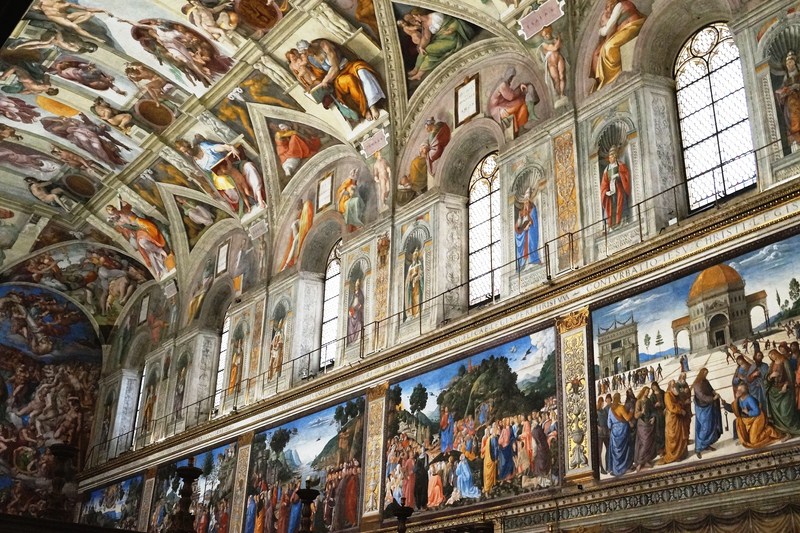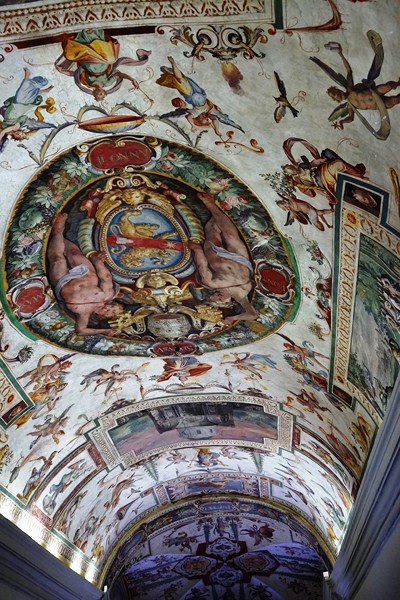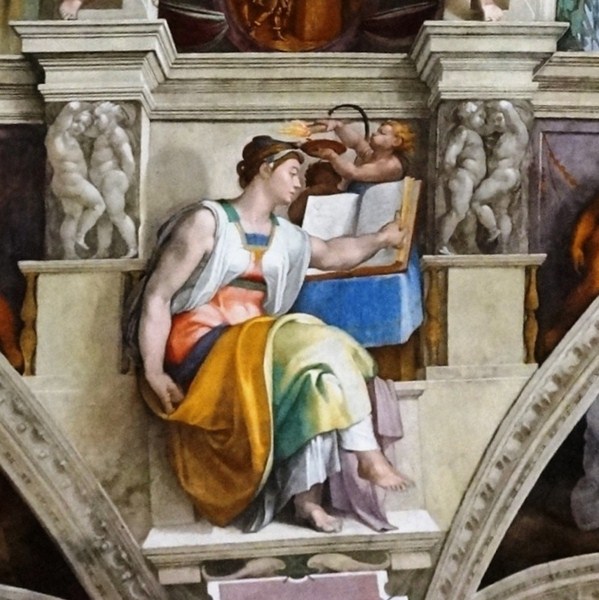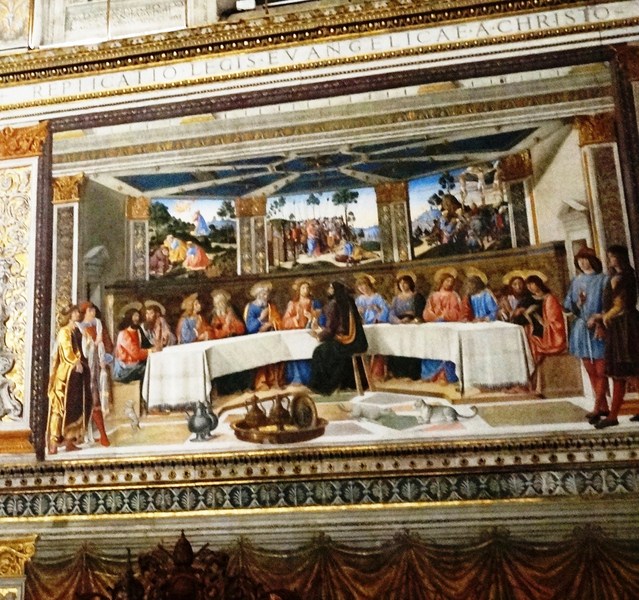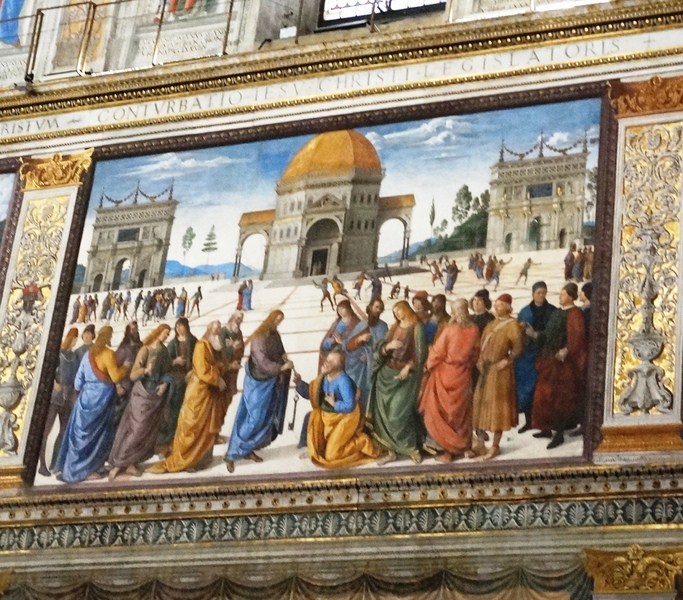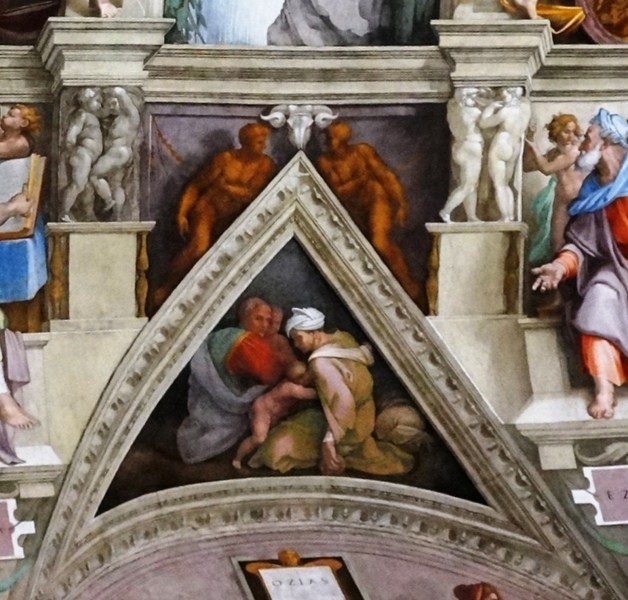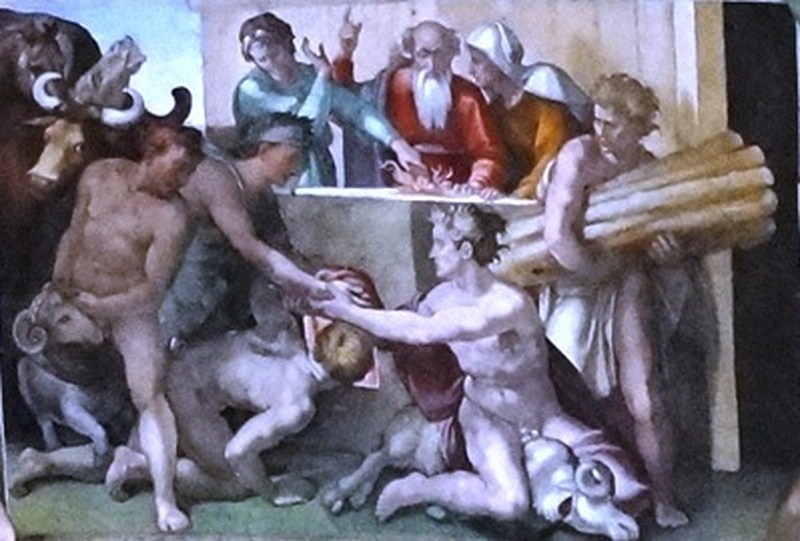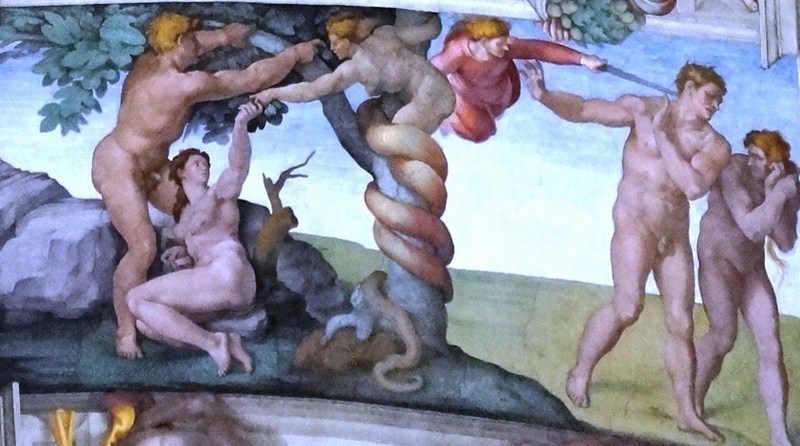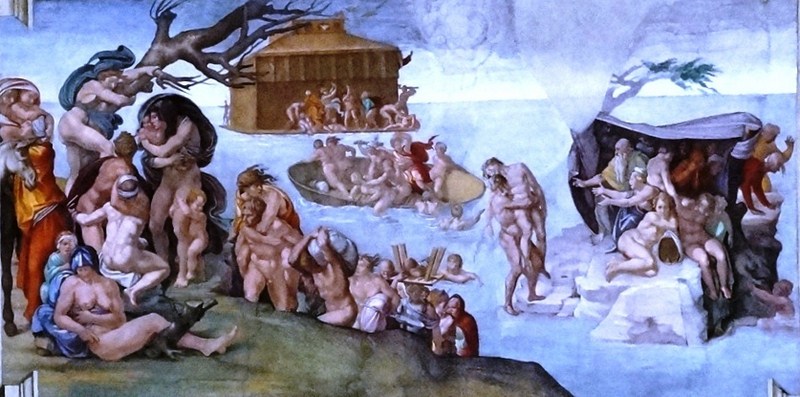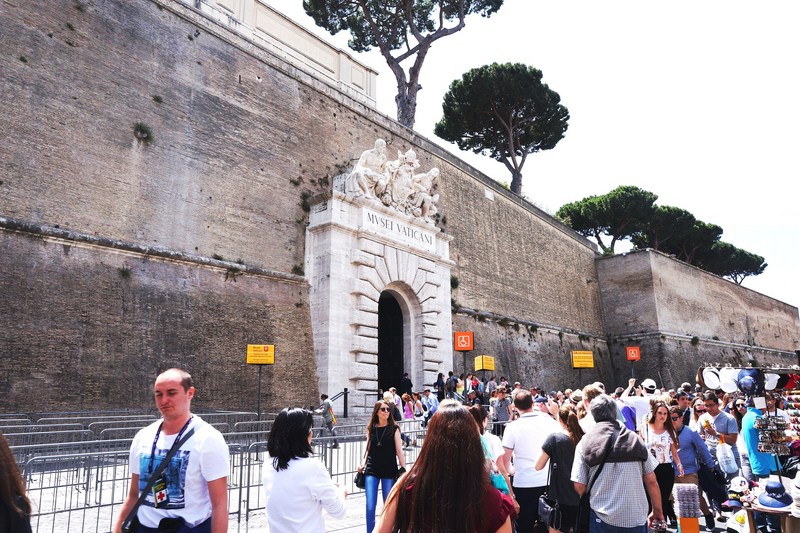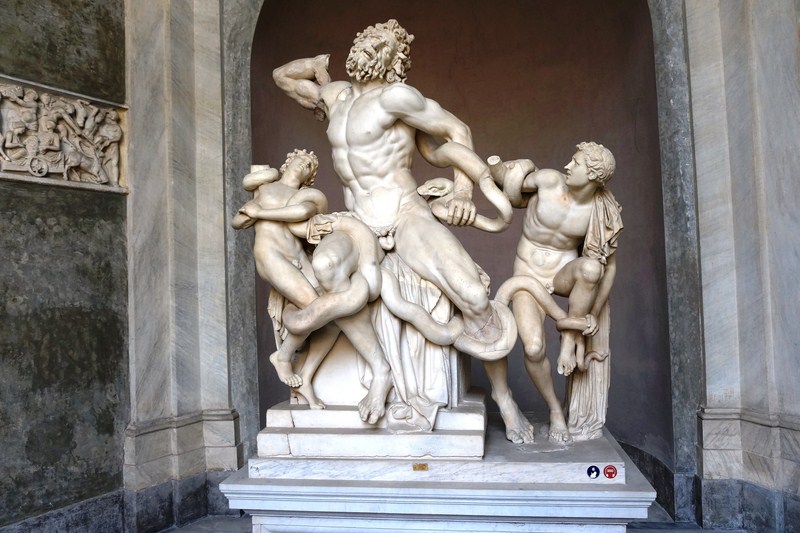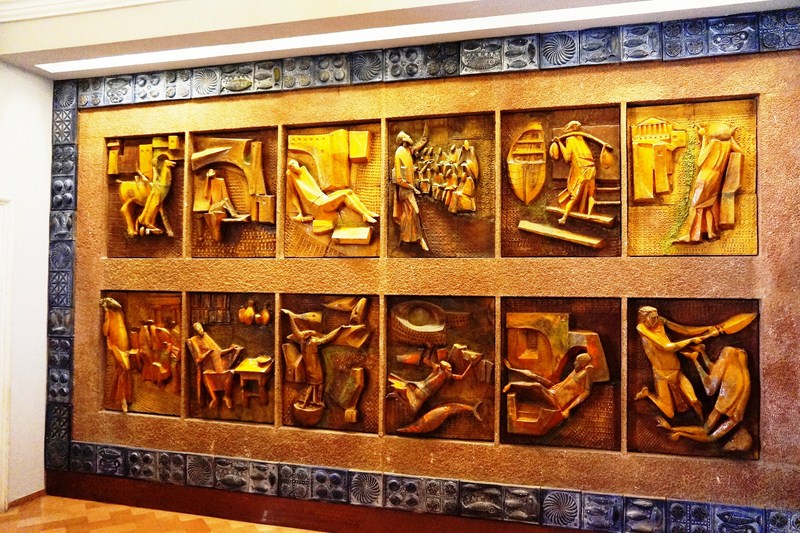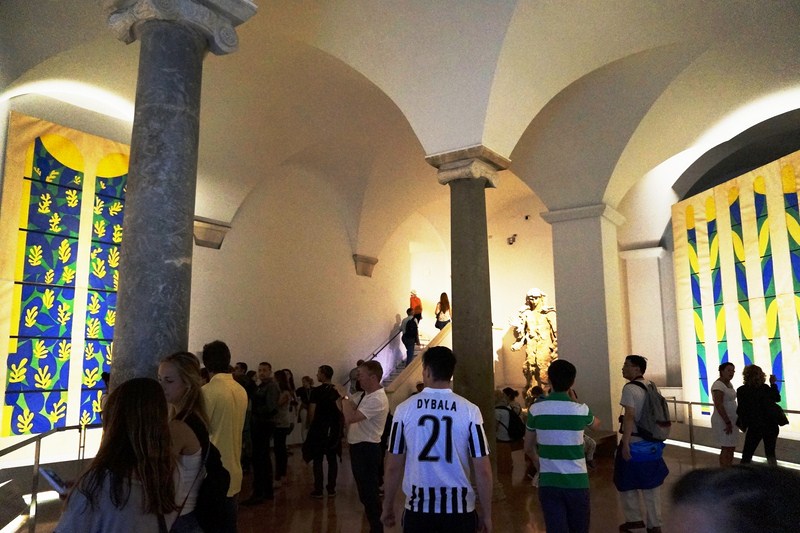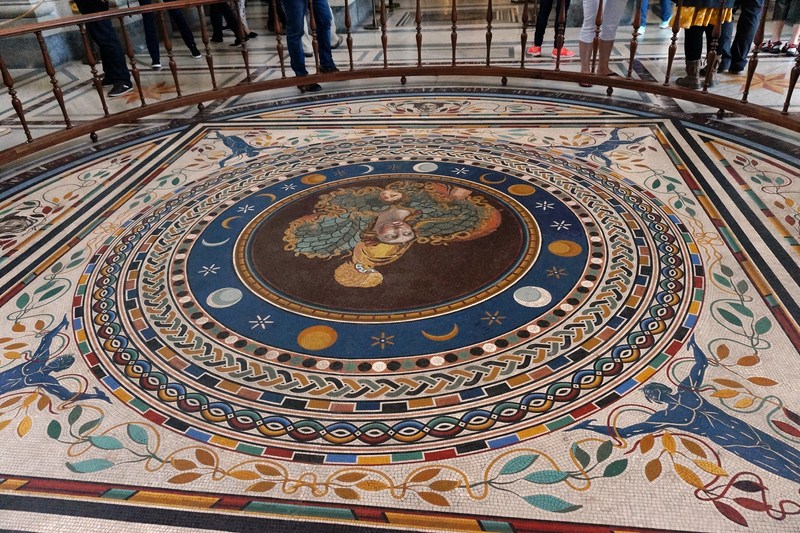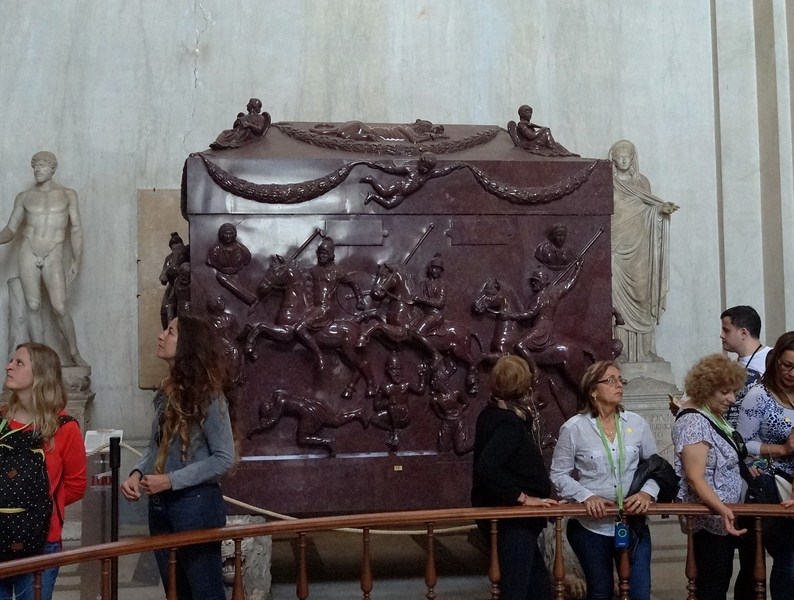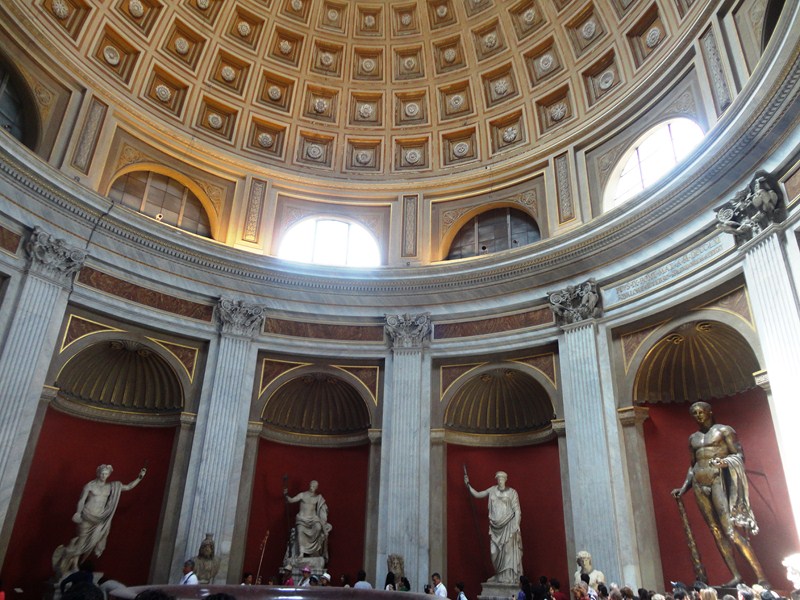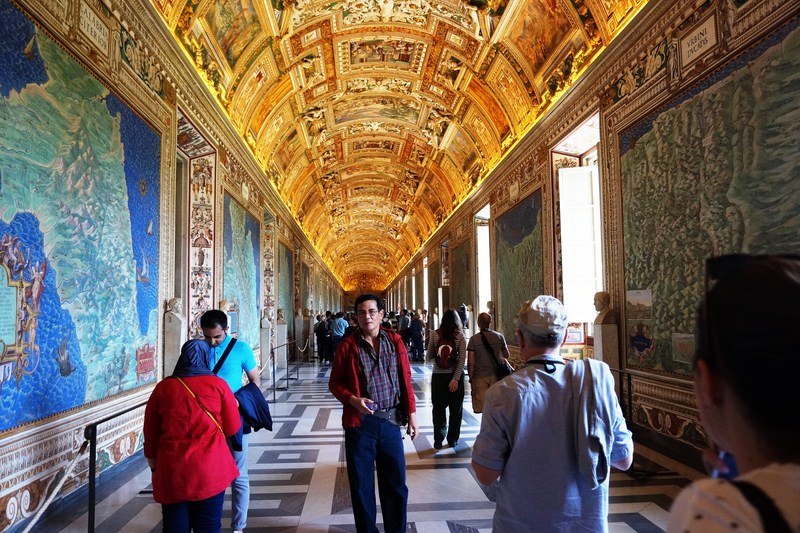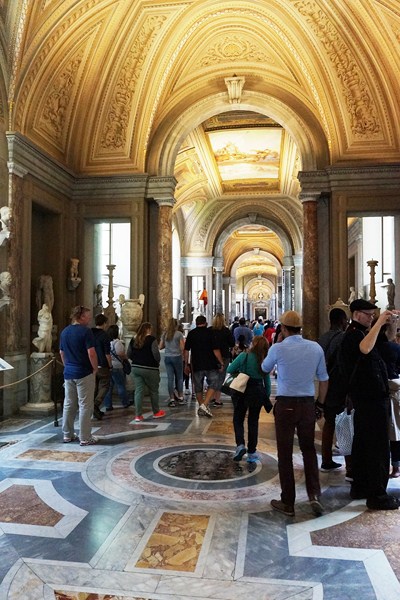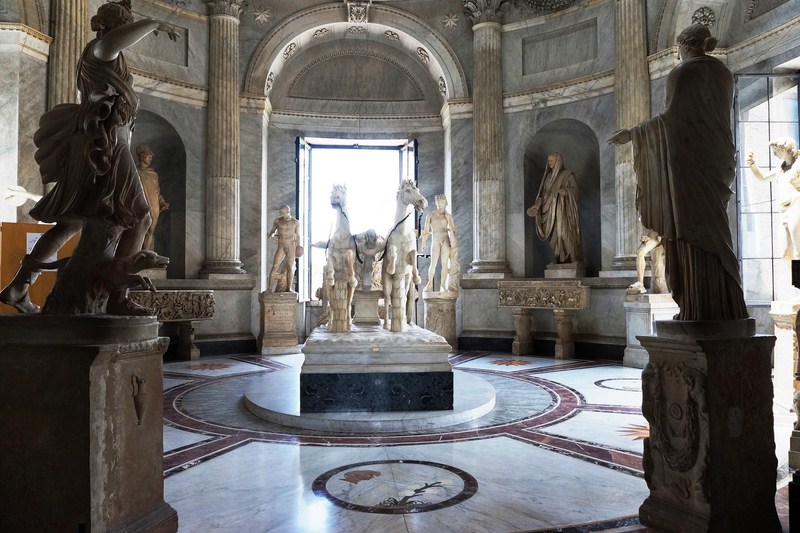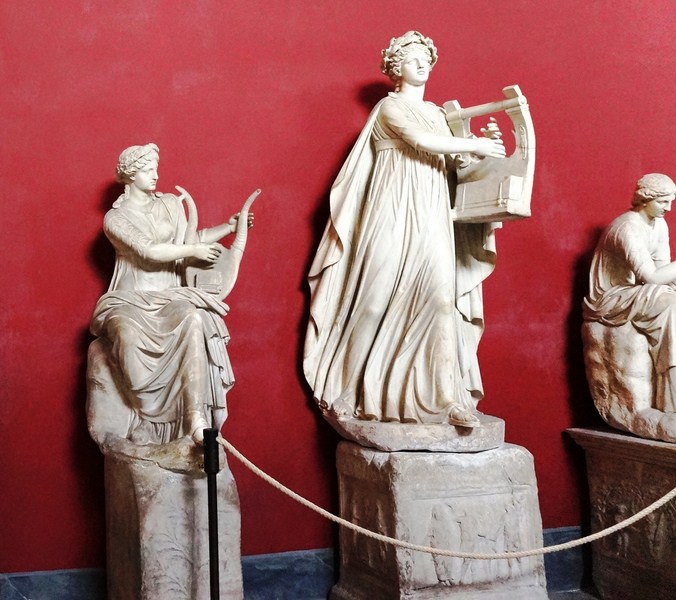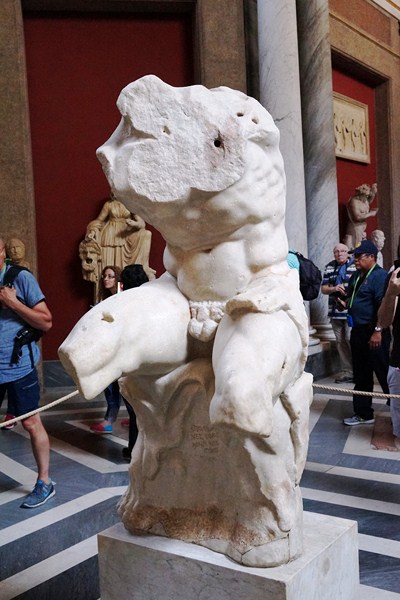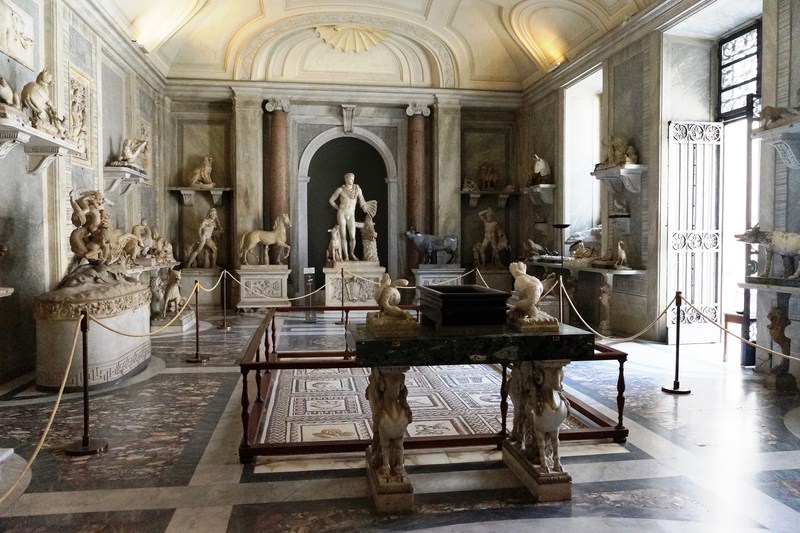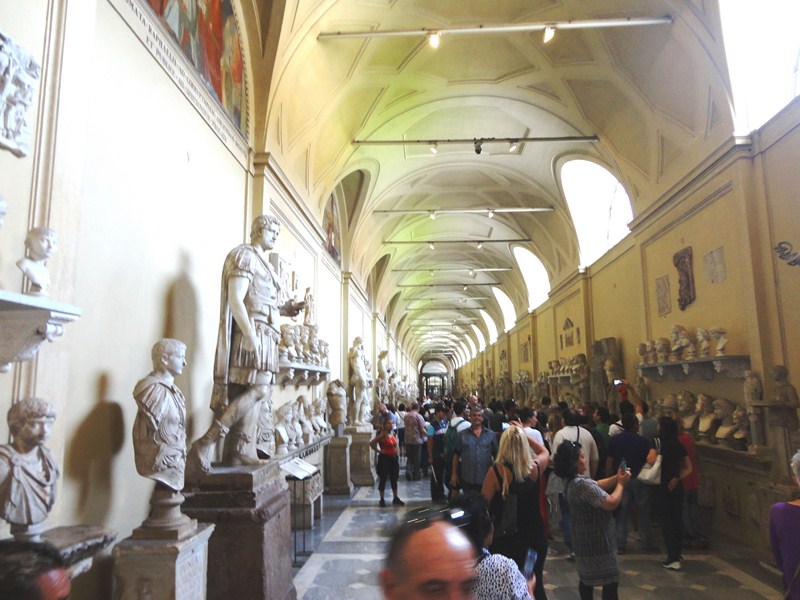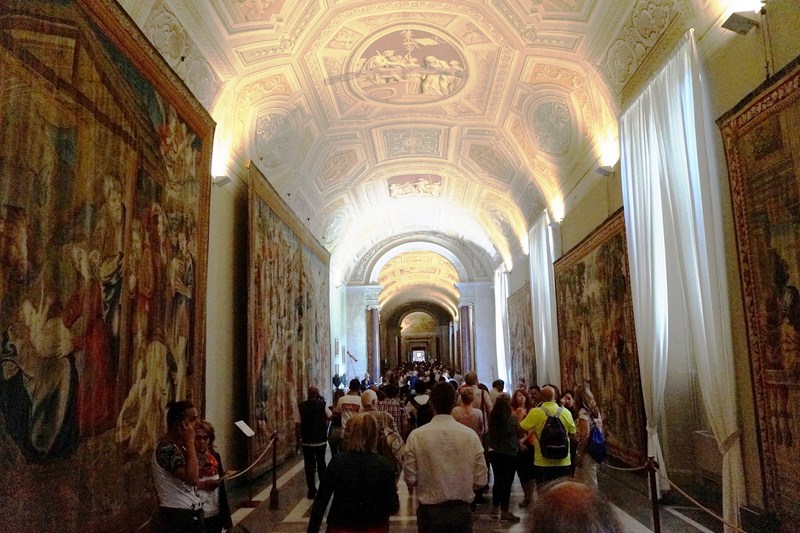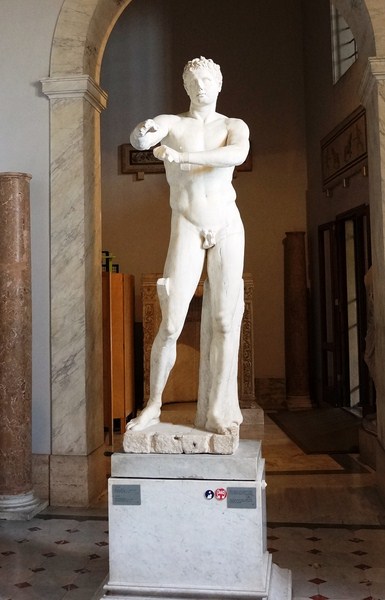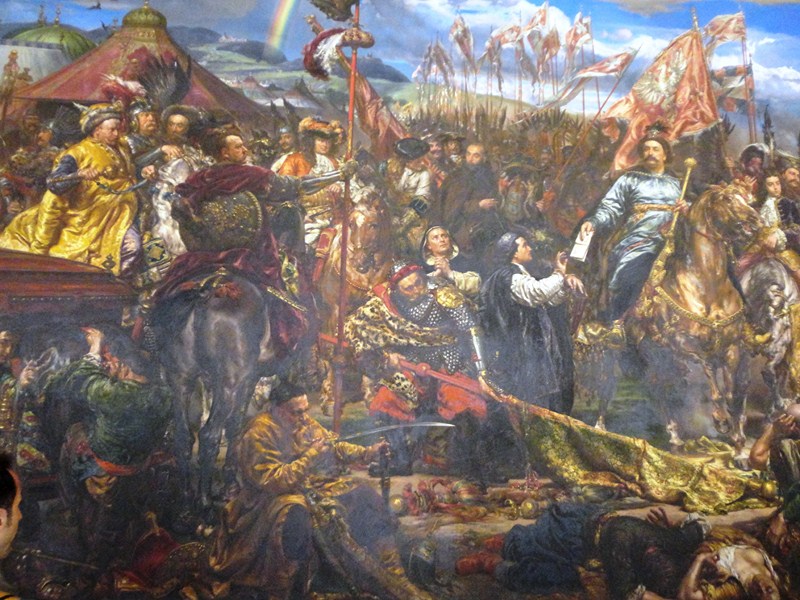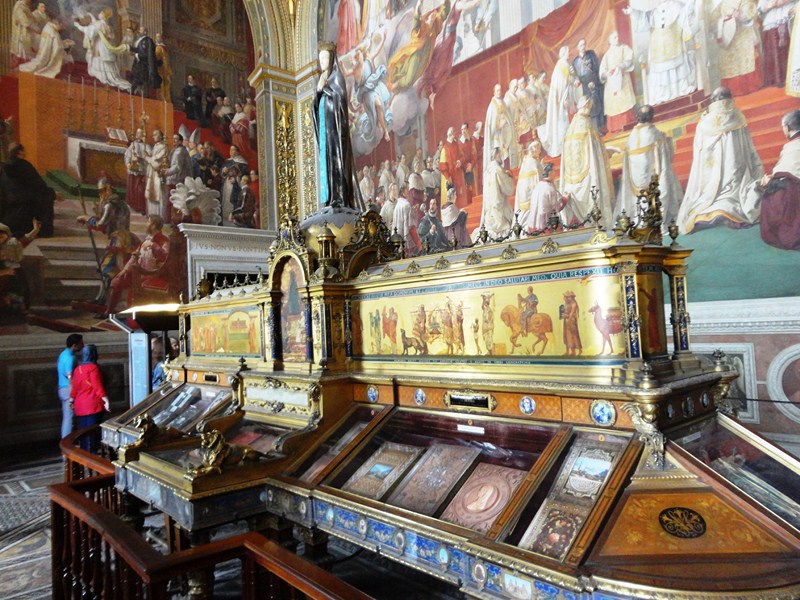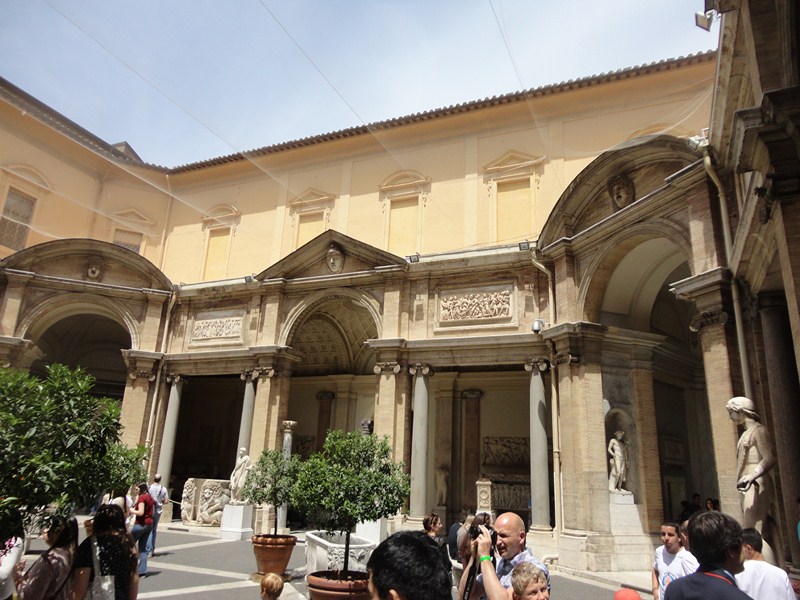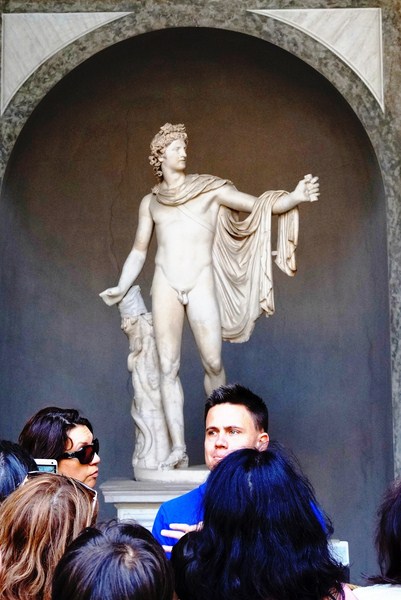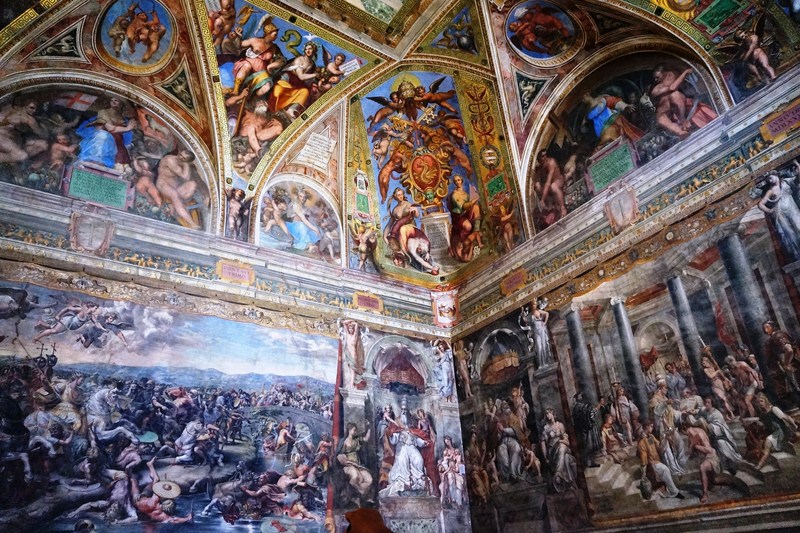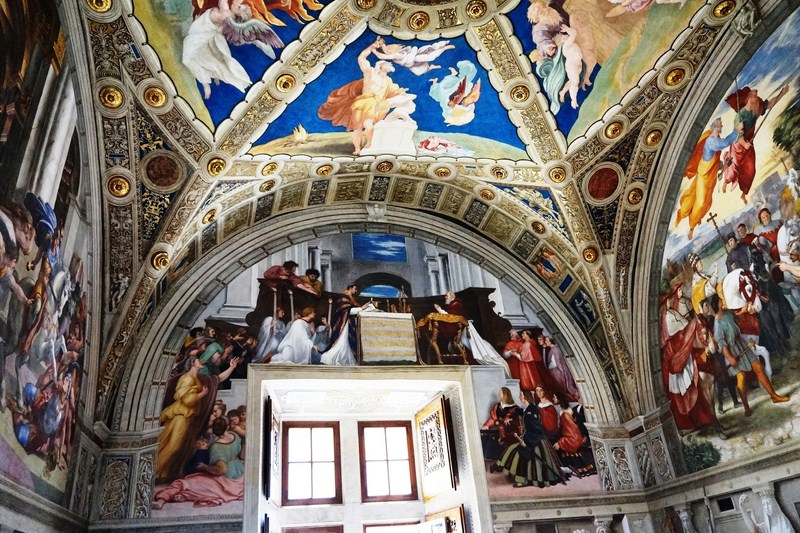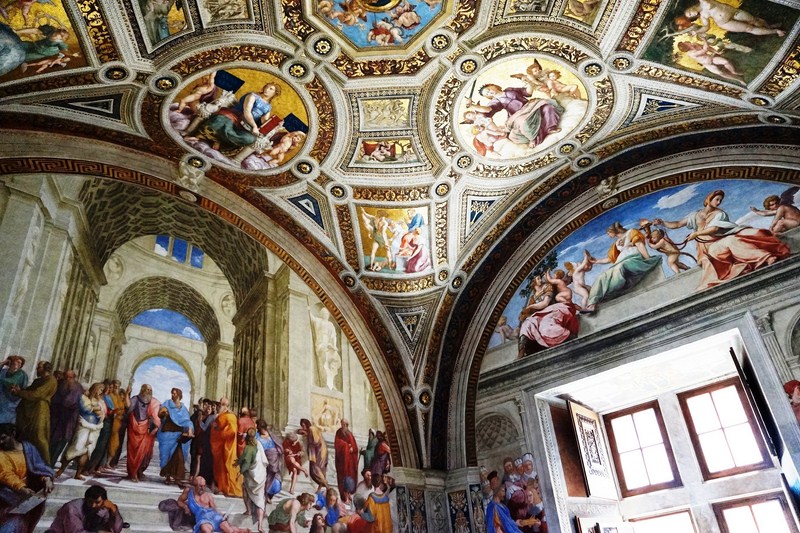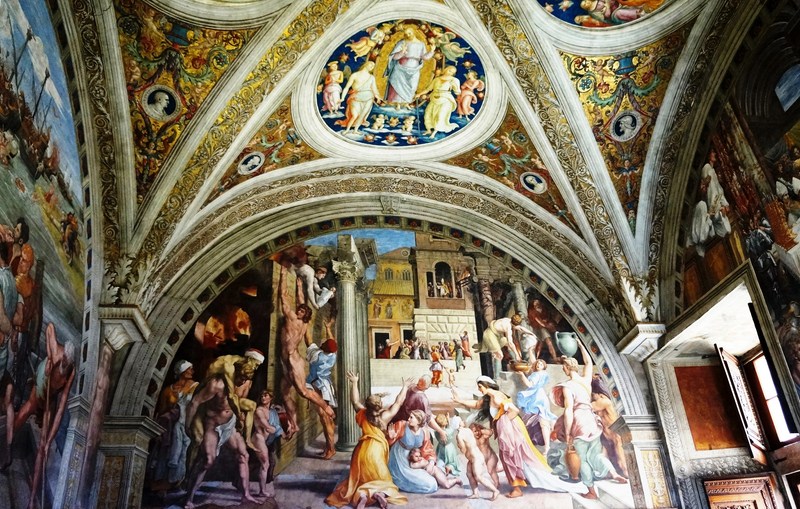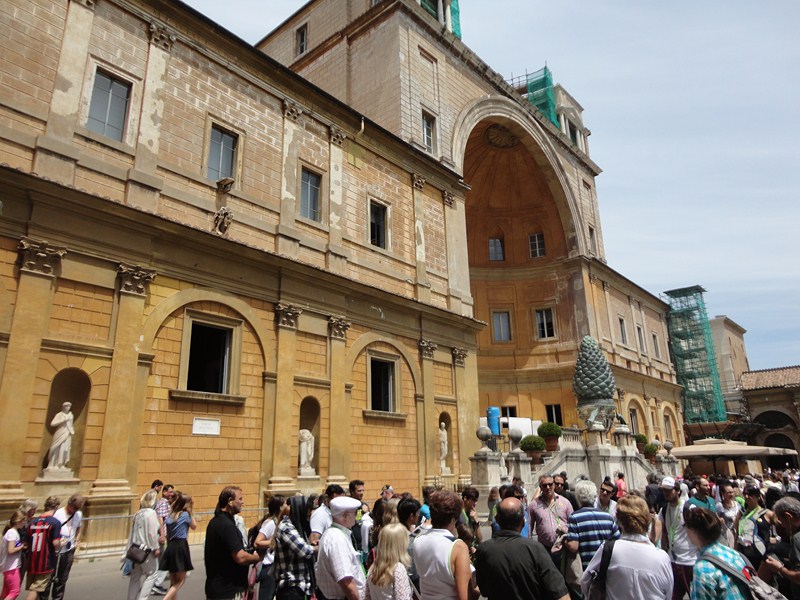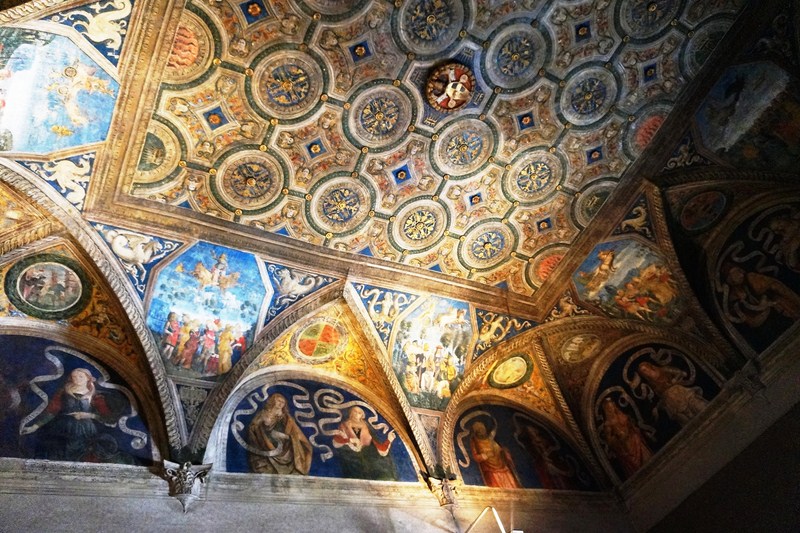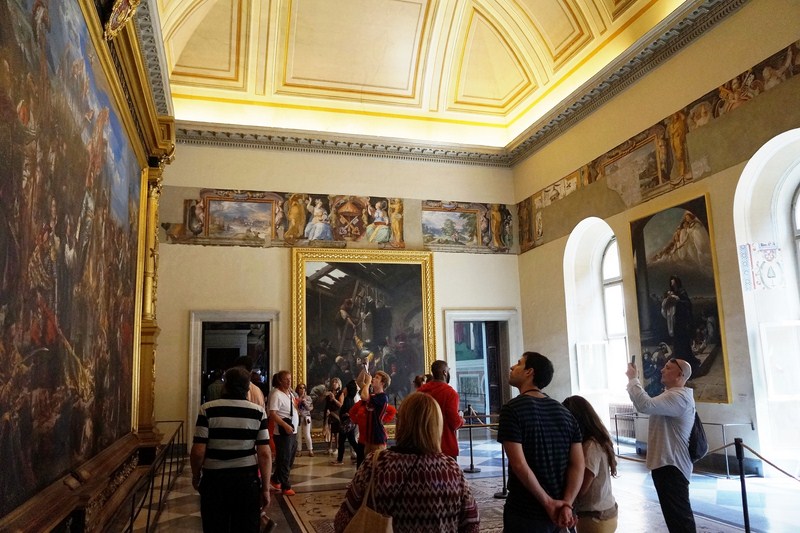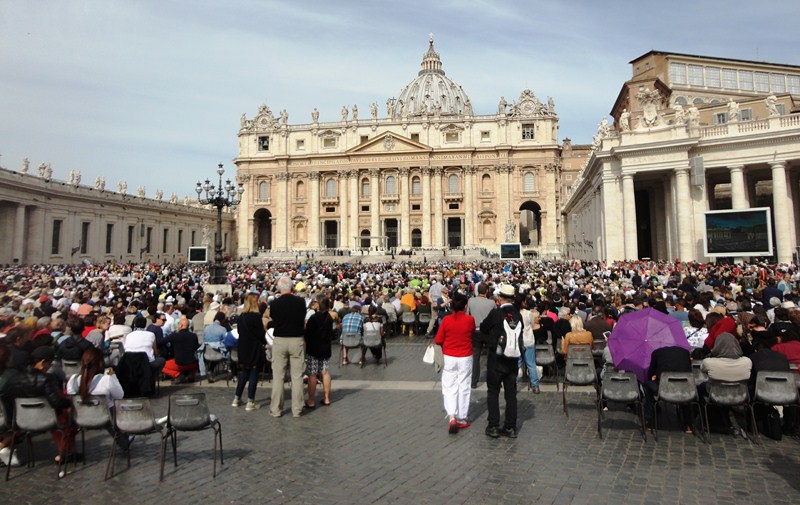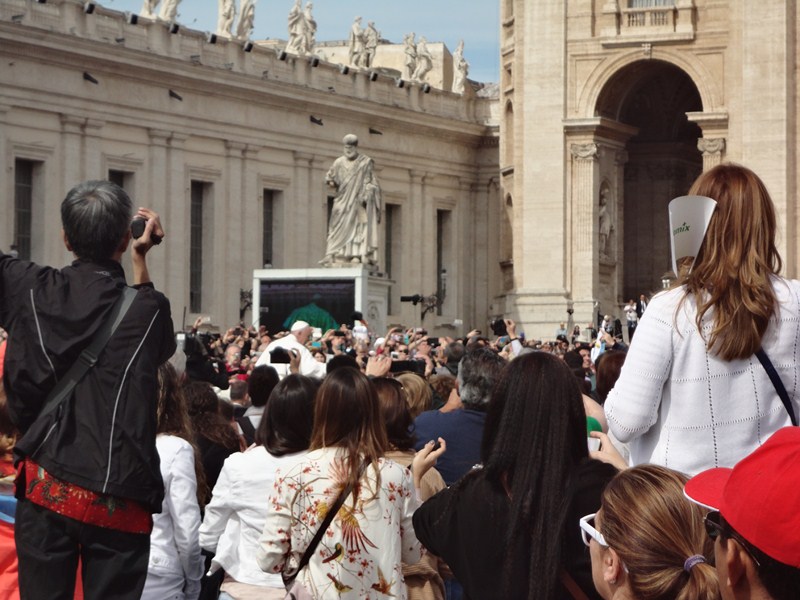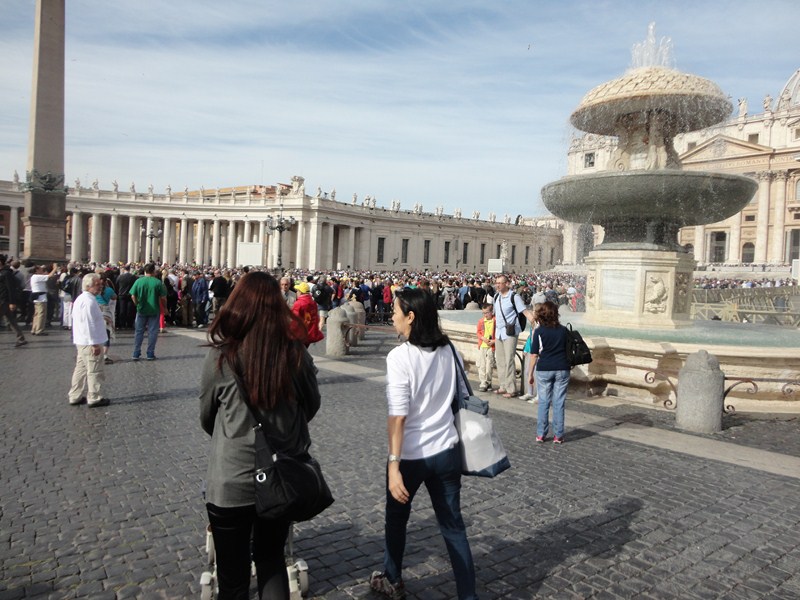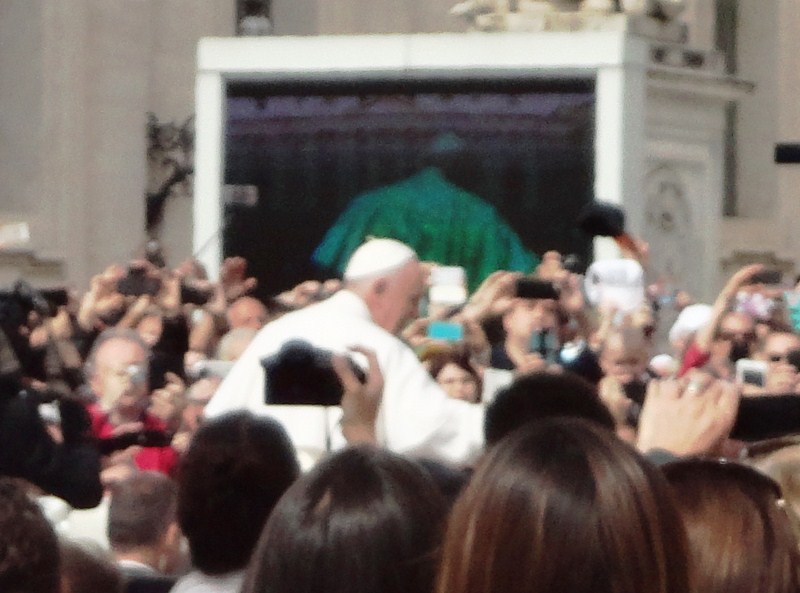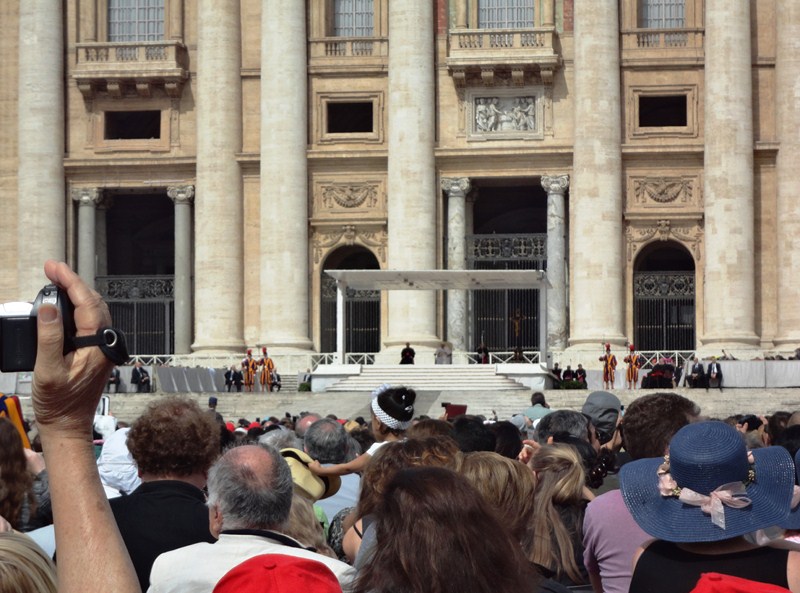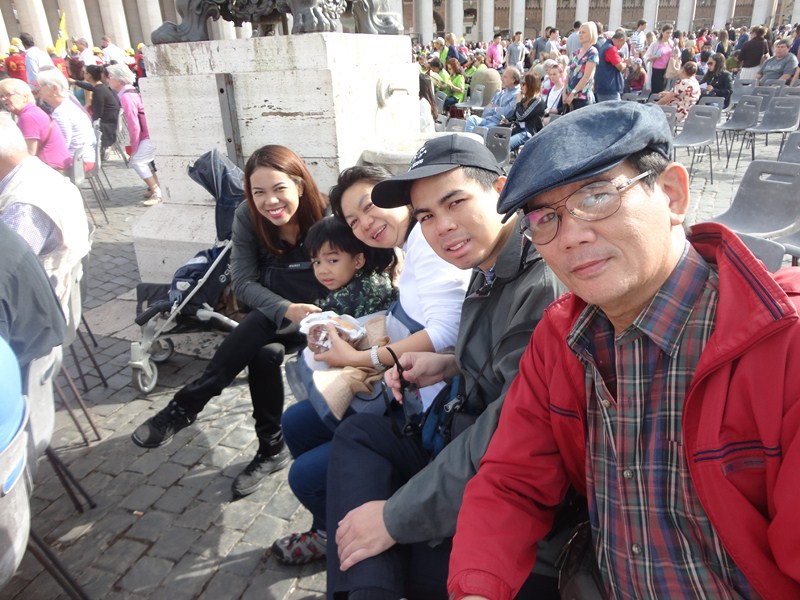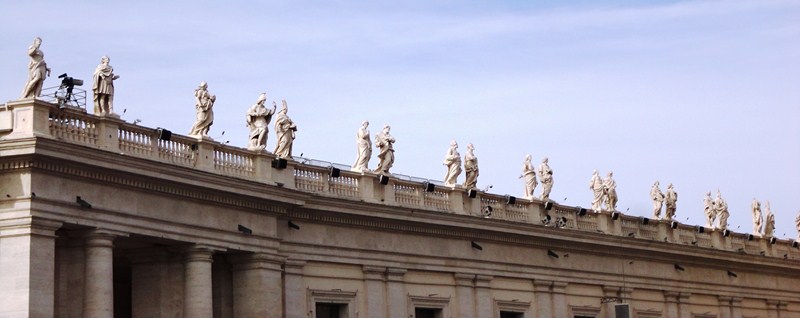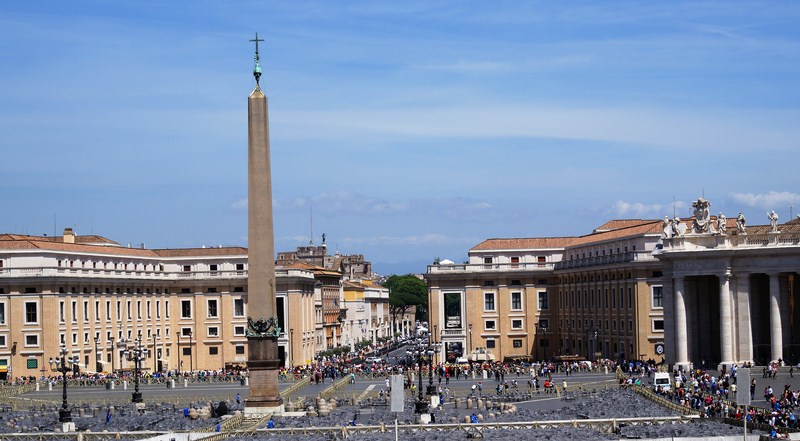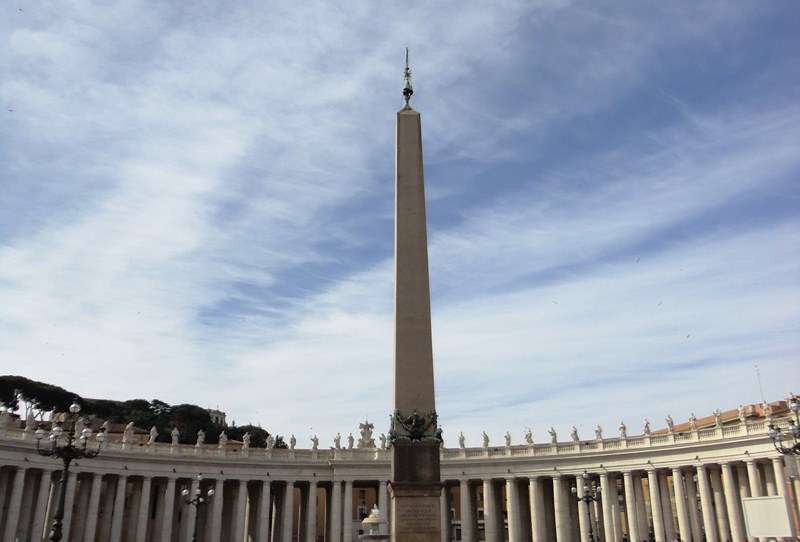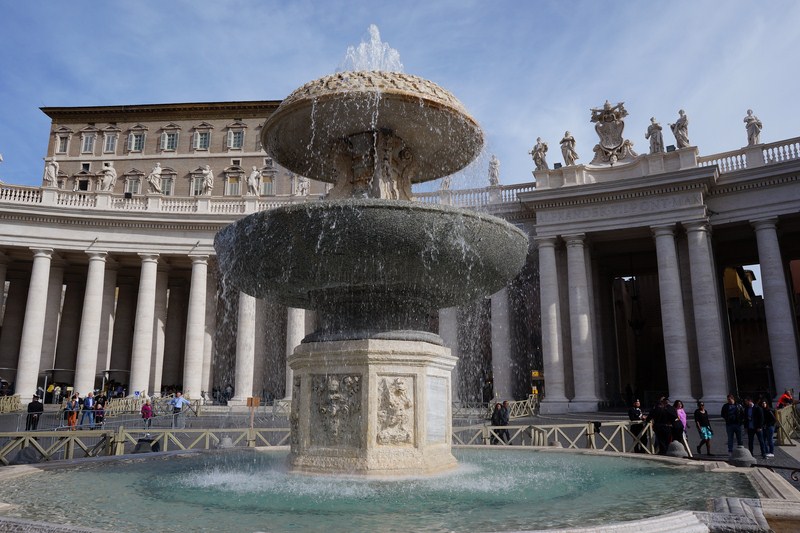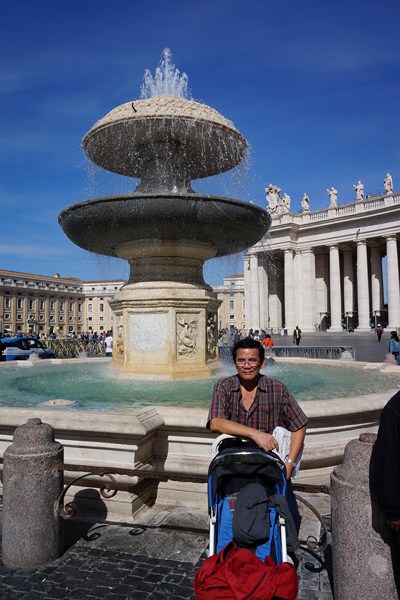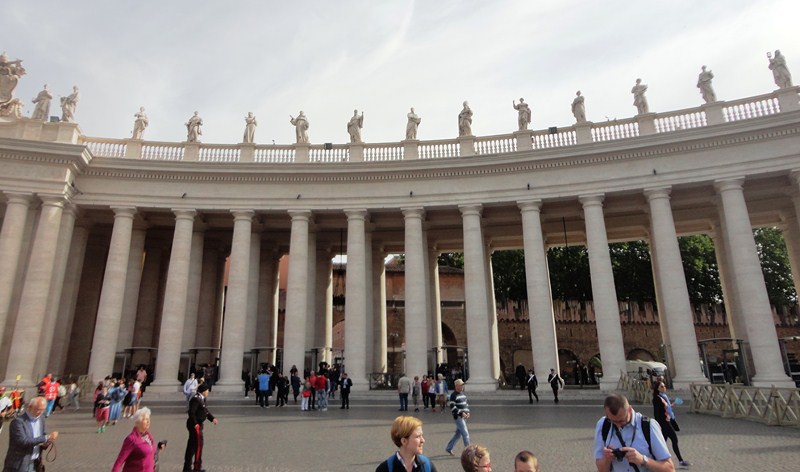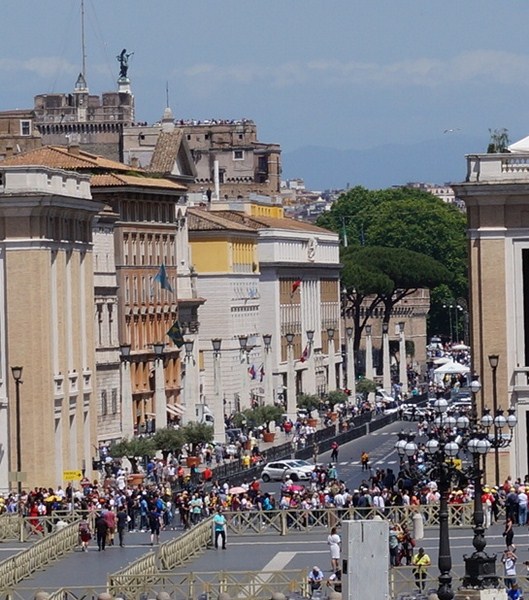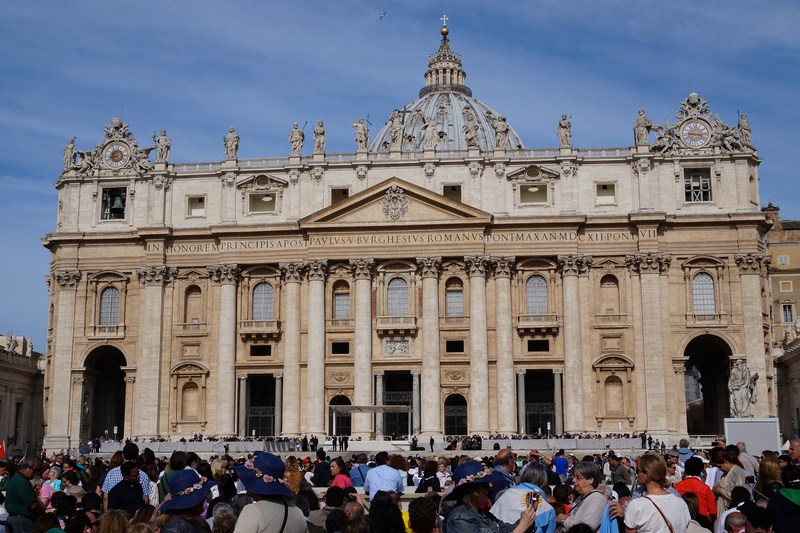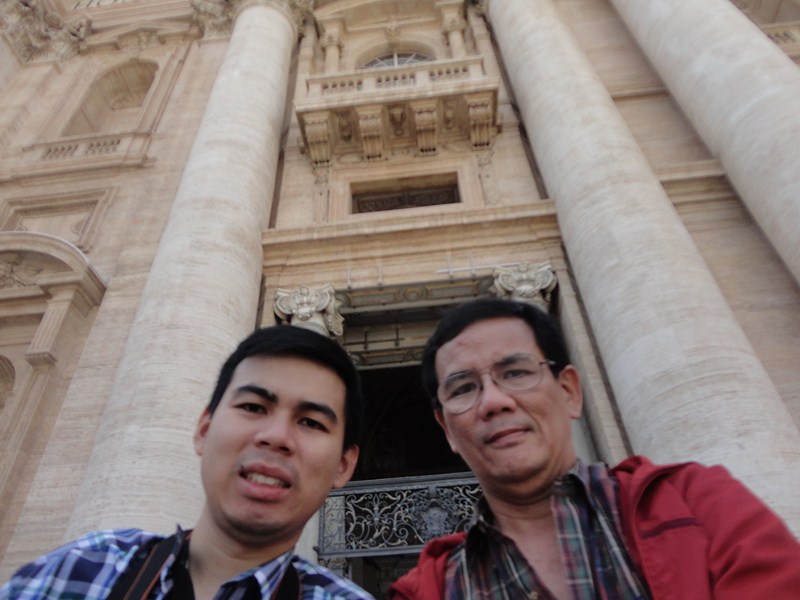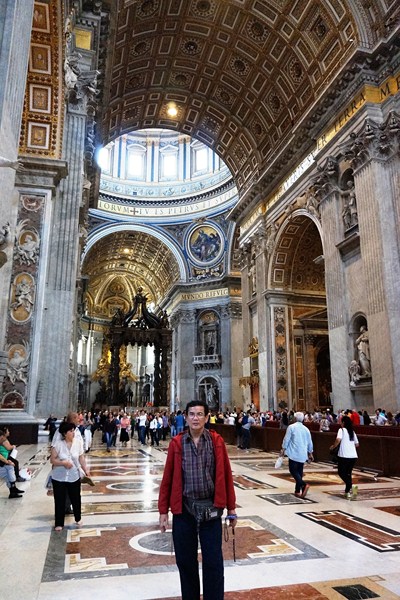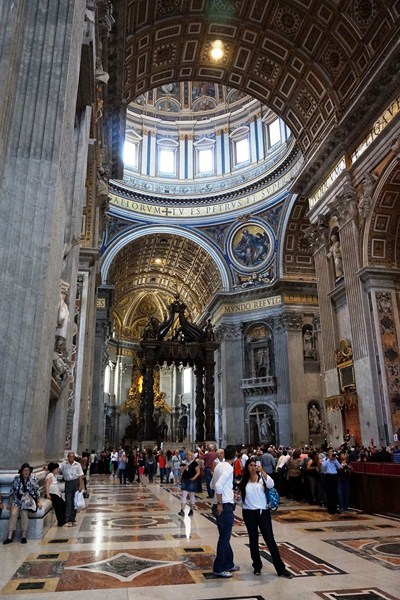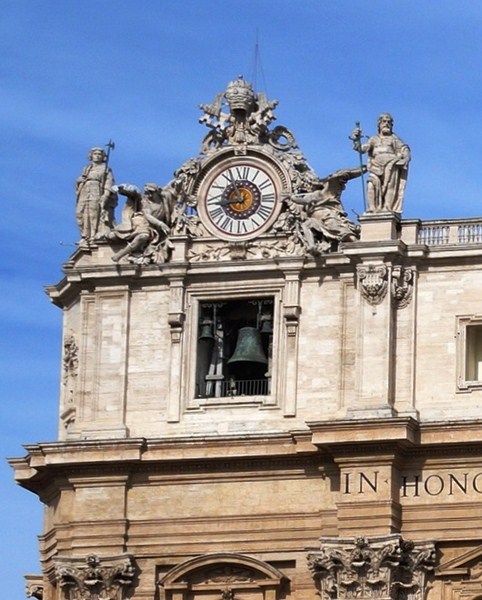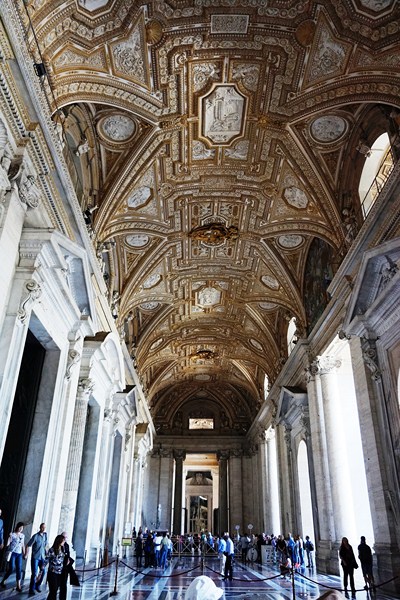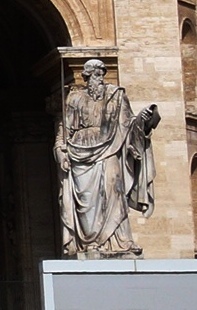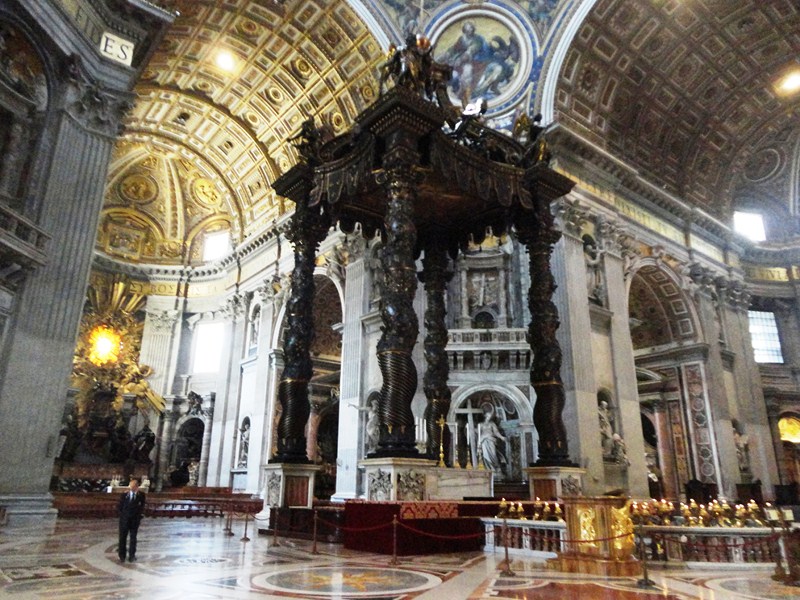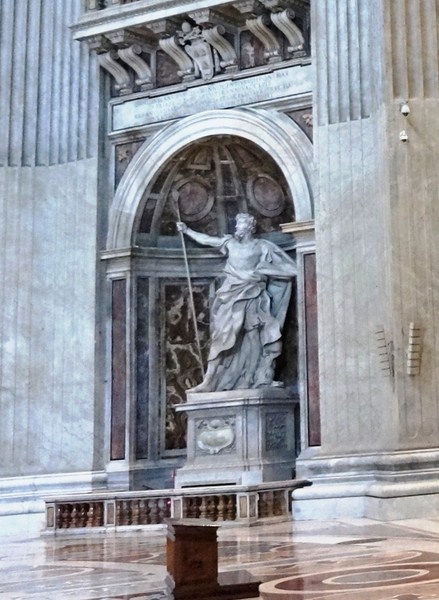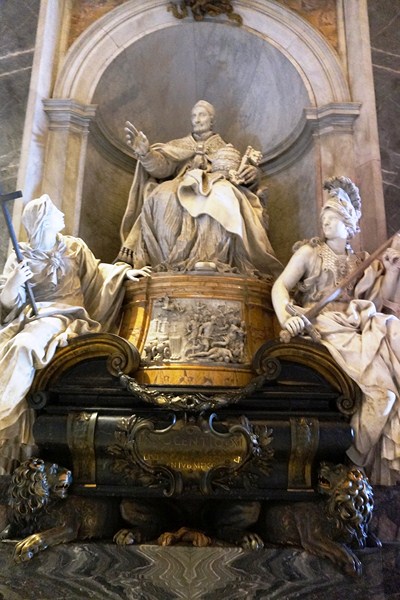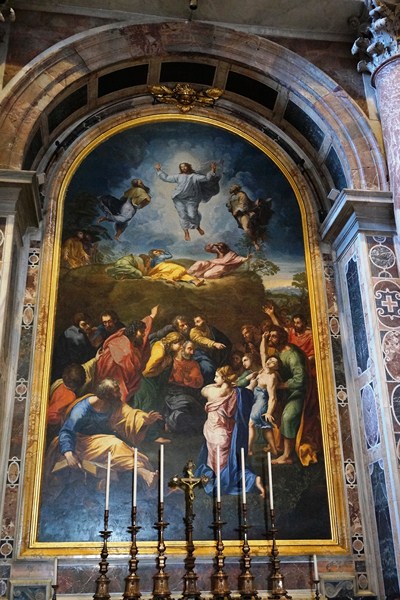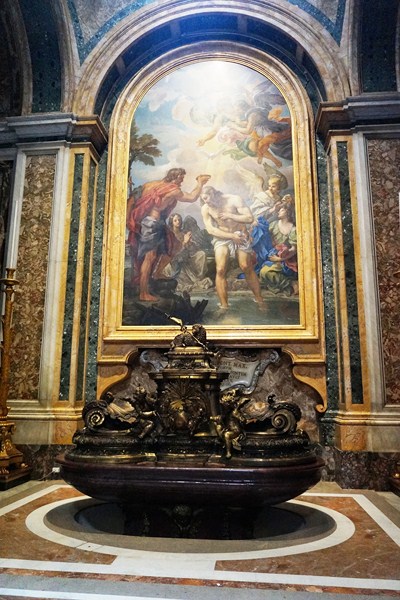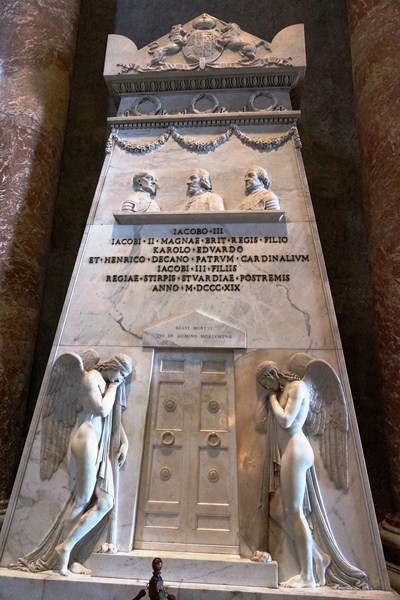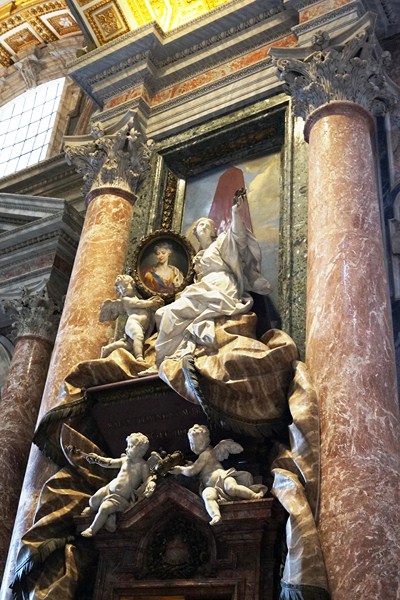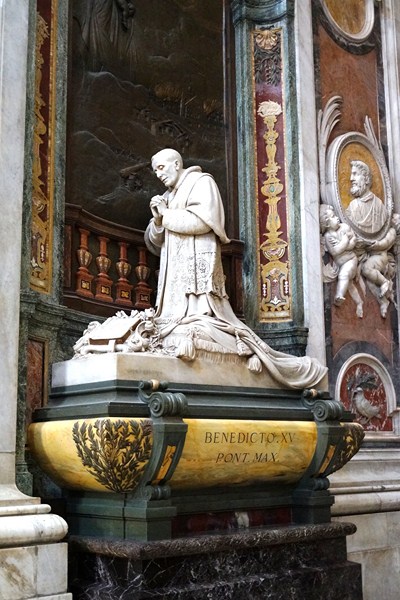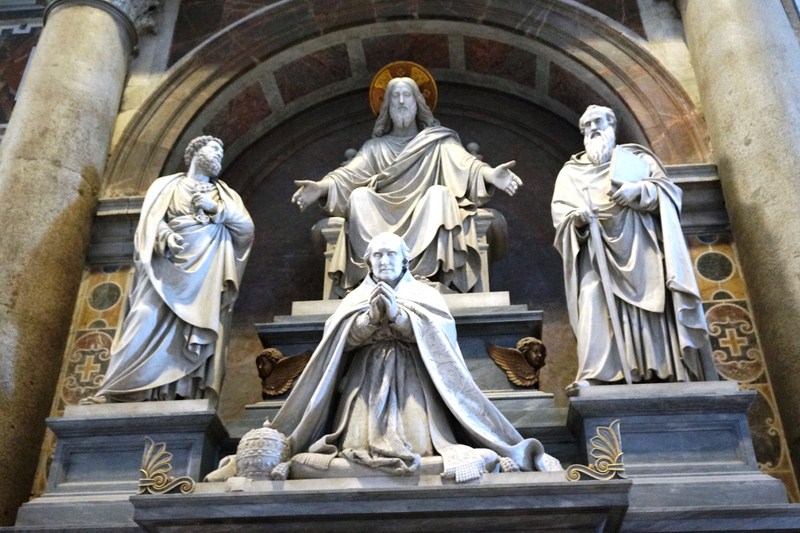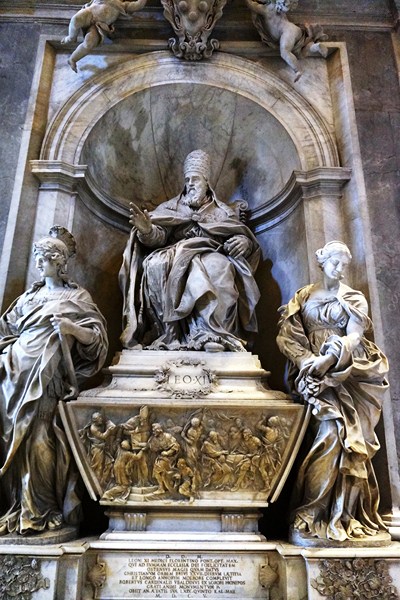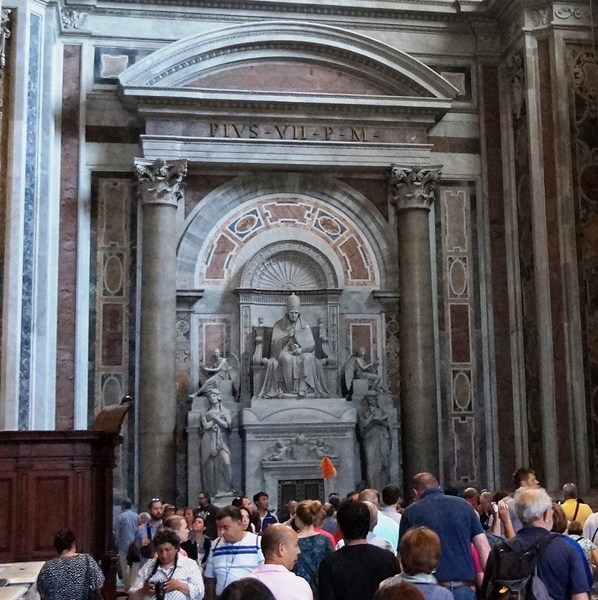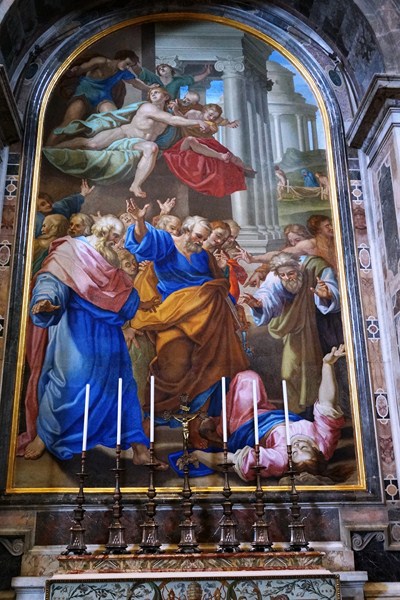The towering, cylindrical Castel Sant’Angelo (English: Castle of the Holy Angel) was initially commissioned by the Roman Emperor Hadrian in 123 AD (finished in 139 AD) as a mausoleum (a decorated cylinder, with a garden top and golden quadriga) for himself, his wife Sabina, and his first adopted son, Lucius Aelius. The remains of succeeding emperors (the last recorded deposition being Caracalla in 217) were also interred there. Here’s some historical trivia regarding Castel Sant’Angelo:
- Aside from a mausoleum, the monument has gone through several different uses. In 401, it lost its native function and became a fortified military outpost in order to defend Rome. In 271 AD, it was subsequently included in the Aurelian Walls by Flavius Augustus Honorius. Beginning in the 14th century, after different changes of properties between the noble Roman families, the Castel Sant’Angelo tied its fate to that of the popes who converted the structure into a castle. At the beginning of the 11th century, the Papal state also used Castel Sant’Angelo as a prison (up to 1906). Prisoners here include Giordano Bruno (accused of heresy and imprisoned here for six years); wizard, masonic alchemist and healer Count Cagliostro; and sculptor and goldsmith Benvenuto Cellini (the only one who managed to escape the fortress). Executions, by decapitation, were performed in the small inner courtyard.
- It was once the tallest building in Rome.
- The Castel is the only building that has followed the development of the city of Rome for about 2000 years (other Roman monuments were reduced to ruins or used as quarries to pick up materials to recycle in new, modern constructions).
- There’s a secret, covered, 800 m. long fortified corridor called the Passetto di Borgo, built by Pope Nicholas III in 1277. It leads from Castel Sant’Angelo to the Leonine walls and Peter’s Basilica. During the famous Sack of Rome (1527), the scurrying Pope Clement VII used it to escape the siege of Holy Roman Emperor Charles V‘s Landsknechte. Borgia Pope Alexander VI also used it in 1494 to escape to the castle and from Charles VIII troops.
- The bronze statue of the Archangel Michael on the roof depicts the legendary sighting, by Pope Gregory I (the Great), of the specter in the year 590 when he appeared and sheathe his sword as a sign of the end of the destructive plague that had seized the city, thus lending the castle its present name – the Castle of the Saint Angel.
- Its terrace was also the setting for the third act of Giacomo Puccini‘s 1900 opera Tosca where the eponymous heroine, wild with pain for the loss of her lover and chased by the guards, leaps to her death from the Castel’s ramparts.
- Decommissioned in 1901, the castle is now a museum, the National Museum of Castel Sant’Angelo (Museo Nazionale di Castel Sant’Angelo).
The building consists of a square, 89 m. (292 ft.) wide base on which a cylindrical colonnaded drum, with a diameter of 64 m. and covered with an earthen tumulus (topped with a statue of Hadrian driving a quadriga), was constructed.
With its chunky round keep, this castle is an instantly recognizable landmark. A huge spiral ramp ascends upwards the Castel Sant Angelo for about 400 feet. The panoramic terrace, two storeys up, offers unforgettable views over Rome.
At the top of the fortress, overlooking the terrace, is a bronze statue of Saint Michael holding his sword, executed in 1753 by the Flemish sculptor Peter Anton von Verschaffelt. It replaced a marble statue, of the same subject, created in 1536 by Raffaello da Montelupo. Montelupo’s can still be seen in an open court in the Castel interior.
The castle’s upper floors are filled with lavishly decorated Renaissance interiors, including the beautifully frescoed Sala Paolina built by Paul III. The notoriously and sumptuously lavish Papal Apartments, complete with gardens and fountains, was built by the infamous Borgia Pope Alexander VI. Known to have the most opulent of decorations and designs, it was said to even have one room painted by Raphael.
The Farnese apartment overlooks the interior Courtyard of the Angel, so called because it houses the original angel that used to perch on the top of the castle until 1747. However, this piazza has had other names, such as the ‘Courtyard of Shootings’ or ‘Courtyard of the Bell’ where from there it was possible to hear the bell tolling announcing the impending executions. Leo X built a chapel with a Madonna by Raffaello da Montelupo. Below the apartments are several floors which include prisons and even a torture chamber.
The Hall of Urns, in what is now known as the Treasury room deep within the heart of the building, is where the urn containing Hadrian’s ashes (scattered by Visigoth looters during Alaric‘s sacking of Rome in 410) are believed to be kept. Its museum has an eclectic collection of Renaissance paintings, sculpture, pottery, military memorabilia and antique Medieval firearms (many used by soldiers fighting to protect the castle).
The now solely pedestrian, 135 m. (443 ft.) long Ponte Sant’Angelo (formerly the Pons Aelius), also built by Hadrian, faces straight onto the Castel. Renowned for the Baroque additions of statues of angels holding aloft elements of the Passion of Christ, it still provides a scenic approach from the center of Rome and the right bank of the Tiber.
Castel Sant’Angelo: Lungotevere Castello 50, Parco Adriano, 00193 Rome, Italy. Open April-September, 9 AM – 7:30 PM, October-March, 9 AM -2 PM. Closed on public holidays. Last admission 1 hour before closing time. Admission: Adults €8, reduced ticket €6. Website: www.castelsantangelo.com. E-mail: info@castelsantangelo.com.
How to Get There:
– Lepanto (Metro A) Ottaviano (Metro A). From Termini take bus #40 Express. From Piazza Navona take Zanardelli St. north to Ponte Umberto I Bridge. After the bridge turn left and Lung Castello will take you straight to the castle. From the Vatican walk east, along Via di Conciliazione Pia, directly to the castle.

